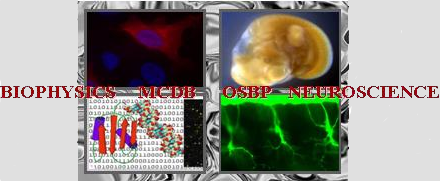Talk abstracts
Talk on Wednesday 04:30-04:45pm submitted by Hsiang-Ling Huang
Mechanisms of dysferlin-mediated membrane repair in health and disease
Hsiang-Ling Huang (Molecular, Cellular, and Developmental Biology Graduate Program), Giovanna Grandinetti (Department of Physiology and Cell Biology, Dorothy M. Davis Heart and Lung Research Institute, Center for Electron Microscopy and Analysis, The Ohio State University), Sarah M. Heissler (Department of Physiology and Cell Biology, Dorothy M. Davis Heart and Lung Research Institute, The Ohio State University College of Medicine), Krishna Chinthalapudi (Department of Physiology and Cell Biology, Dorothy M. Davis Heart and Lung Research Institute, The Ohio State University College of Medicine)
Abstract:
Plasma membrane repair in response to damage is essential for cell viability. Dysferlin plays a key role in the Ca2+-dependent membrane repair mechanism in striated muscles by mediating the fusion of intracellular vesicles with the plasma membrane. Defects in dysferlin-mediated membrane repair caused by missense mutations are associated with a wide spectrum of muscle diseases known as dysferlinopathies. However, the lack of a structure of dysferlin or any member of the ferlin family of vesicle fusion and membrane trafficking proteins has impeded a mechanistic understanding of membrane repair in health and disease and the development of effective therapeutic strategies for dysferlinopathies. Here, we present cryo-electron microscopy structures of the full-length human dysferlin monomer and homodimer at 2.96 Å and 4.65 Å resolution, respectively. The structures define the general architecture of the dysferlin monomer, ferlin family-specific domains, and homodimerization mechanisms essential to function. Finally, the structures, biophysical, and cell biological experiments reveal how clinically relevant missense mutations in dysferlin contribute to disease mechanisms in dysferlinopathies. In summary, our findings provide a framework for the molecular mechanisms of dysferlin and the broader structural context within the ferlin family as a whole and deepen our understanding of membrane repair mechanisms in health and muscle disorders. These structural insights hold the potential to accelerate targeted structure-guided therapeutics aimed at ameliorating dysferlinopathies.
Keywords: Dysferlin, membrane repair, cryo-EM
